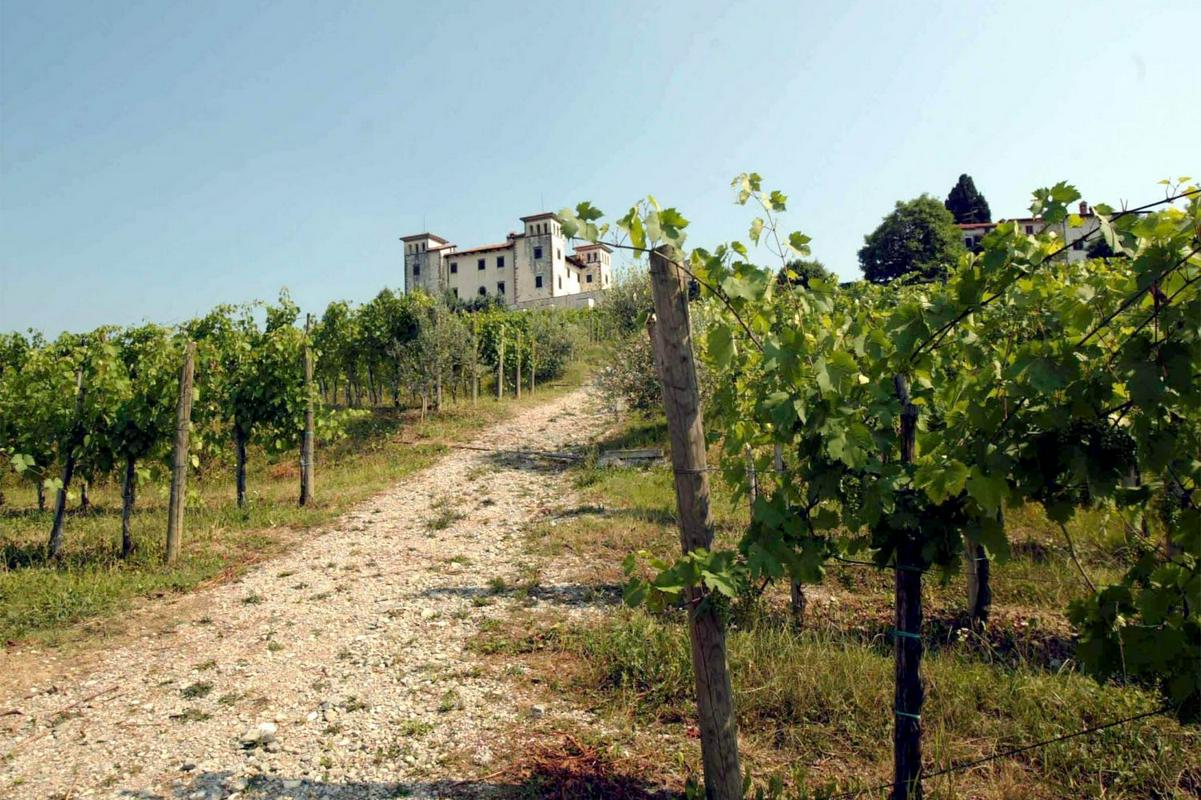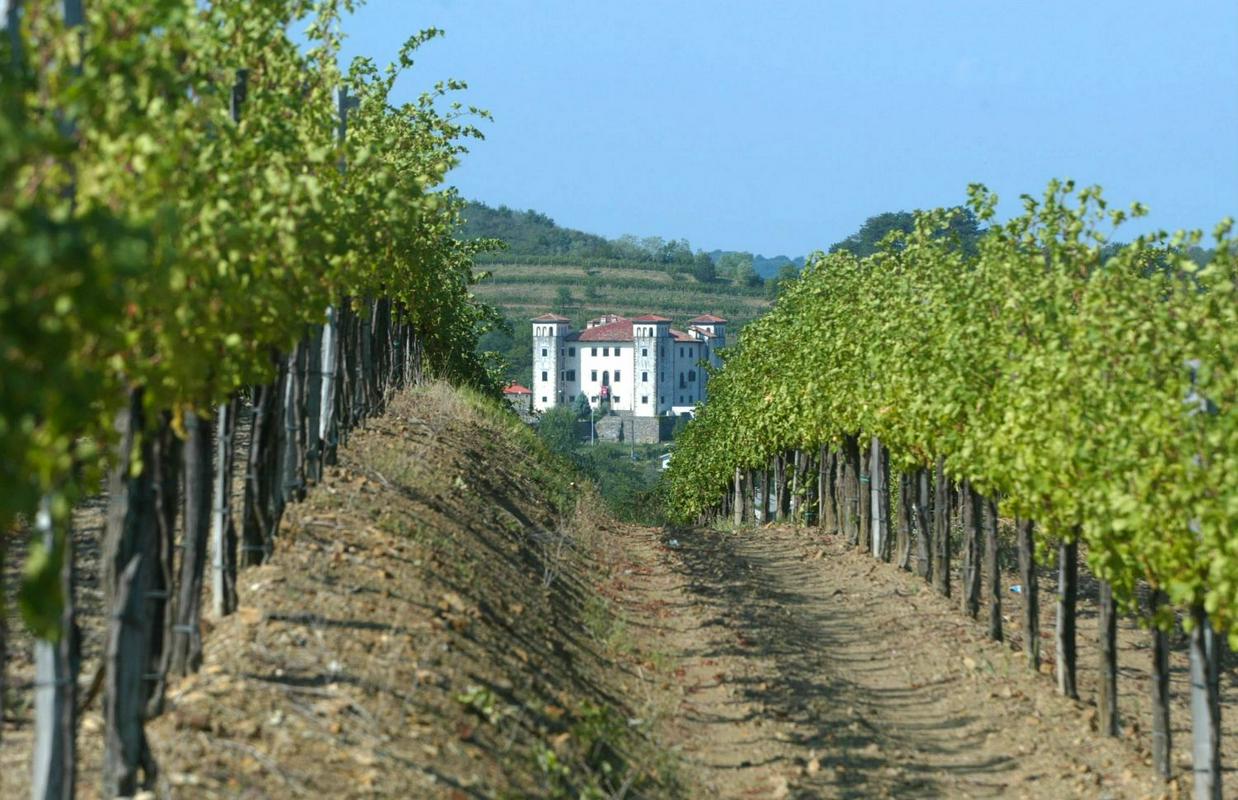

The first building on the spot, a fortress, was probably built among the vineyards in the 13th century; written records from that era are scarce and the details are shrouded in mystery. Historians do know, however, that the current castle, built in the Renaissance style, dates back to the 17th century.
Over the years, Dobrovo Castle was owned by several Italian noble families. Coats-of-arms in one of the rooms still recall those influential owners. For most of this time, the building was used as a hunting lodge – Brda’s woods were, and remain, rich with wildlife.
In the late 19th century, the castle was purchased by a Spanish nobleman named Silverio de Baguer. Among other things, he had ornate frescoes added to one of the chambers and established an extensive museum collection devoted to the history and the traditions of the Brda region.
Like many other castles in Slovenia, Dobrovo was badly affected by the turmoil of the 20th century. During World War I, the building housed Italian soldiers. It was looted and badly damaged in World War II and left to decay when the Communists came to power after the war. It wasn’t until 1979 that the local authorities began to restore the building.
Now under the auspices of the Gorica Regional Museum, Dobrovo features an extensive museum collection, based in large part on the objects collected by Silverio de Baguer. Some of the castle’s chambers have been restored to their 19th century appearance.
One of the biggest tourist draws is the Zoran Mušič Gallery, devoted to the artist who was born in the nearby Vipava Valley and rose to fame in France and Italy. A restaurant in the castle’s cellar introduces visitors to the region’s gastronomic heritage, while the castle gardens provide views of the vineyards that have made the Brda region so famous – and brought prosperity to this corner of western Slovenia.

































































